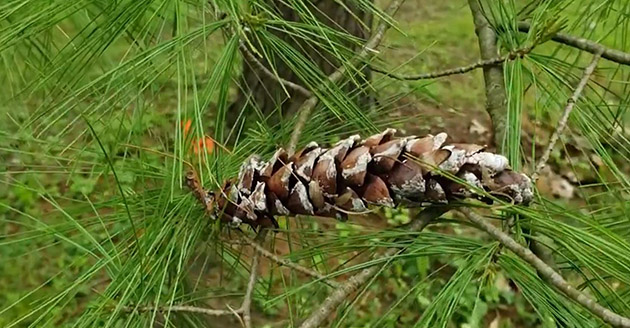Intro to Trees of Indiana: Eastern White Pine
The classic and trusted book "Fifty Common Trees of Indiana" by T.E. Shaw was published in 1956 as a user-friendly guide to local species. Nearly 70 years later, the publication has been updated through a joint effort by the Purdue Department of Forestry and Natural Resources, Indiana 4-H, and the Indiana Department of Natural Resources, and reintroduced as "An Introduction to Trees of Indiana."
A printed copy of the full publication is available for purchase for $7 in the Purdue Extension Education Store. The field guide helps identify common Indiana woodlot trees.
Each week, the Intro to Trees of Indiana web series will offer a sneak peek at one species from the book, paired with an ID That Tree video from Purdue Extension forester Lenny Farlee to help visualize each species as it stands in the woods. Threats to species health as well as also insight into the wood provided by the species, will be provided through additional resources as well as the Hardwoods of the Central Midwest exhibit of the Purdue Arboretum, if available.
paired with an ID That Tree video from Purdue Extension forester Lenny Farlee to help visualize each species as it stands in the woods. Threats to species health as well as also insight into the wood provided by the species, will be provided through additional resources as well as the Hardwoods of the Central Midwest exhibit of the Purdue Arboretum, if available.
This week, we meet the eastern white pine or Pinus strobus, which historically was one of the tallest trees in the eastern United States.
This conifer is the only five-needled pine native to Indiana, meaning that the bundles of needles coming off the branches in one location, also called fascicles, include five needles per bundle. These needles are typically between two and four inches long and are blue green in color. Needles remain on the tree for two to three years before dropping in the fall.
The bark on younger trees is dark and relatively smooth, and becomes quite furrowed in older trees. The eastern white pine adds a ring of side branches and a terminal shoot yearly with age.
The cones of this species are up to eight inches long, have relatively thin scales and are often covered with quite a bit of white sap or pitch. Cones remain on the tree for two years.
Eastern white pine trees typically grow to between 65 and 100 feet tall, but can exceed 150 feet tall in old growth forests. This species prefers acidic, moist and well-drained soil, but can tolerate alkaline soils. Eastern white pine is native to the central and eastern United States and Canada. Its range extends as far west as Arkansas, Missouri, Iowa and Minnesota in the U.S. and Manitoba in Canada. Its distribution reaches south through the Great Lakes states and in the Appalachian Mountains into northern Georgia as well as east along the Atlantic seaboard.
The Morton Arboretum notes that eastern white pine is easily transplanted, quick to establish and regain rapid growth. This species is adaptable to most soil types unless it is excessively wet or heavy clay, but is susceptible to chlorosis symptoms in high pH soils. It is also sensitive to salt and air pollution.
De-icing salts in winter may cause injury or even kill white pine needles and branches. Symptoms typically appear only on the side of the tree closest to the salted road. White pine decline is a disorder that causes white pines to die unexpectedly and rapidly, seemingly without a specific cause.
The Wood Database notes that eastern white pine has a 12 percent moisture content and weighs in at 25 pounds per cubic foot. This species is rated as easy to work with using both hand and machine tools and it also stains, glues and finishes well.
Eastern white pine is widely used for construction lumber, crates, boxes, interior millwork, carving and boatbuilding. Historically, its long, straight trunks were once prized for use as ship masts.
Other Resources:
ID That Tree: Eastern White Pine
Morton Arboretum: Eastern White Pine
Tree Diseases: White Pine Decline in Indiana
White Pine and Salt Tolerance
U.S. Forest Service Database – Eastern White Pine
Purdue Arboretum Explorer
The Woody Plant Seed Manual, U.S. Forest Service
Purdue Plant Doctor
Native Trees of the Midwest
Shrubs and Woody Vines of Indiana and the Midwest
Investing in Indiana Woodlands, The Education Store
Forest Improvement Handbook, The Education Store
ID That Tree, Purdue Extension-Forestry & Natural Resources (FNR) YouTube playlist
Woodland Management Moment , Purdue Extension-FNR YouTube playlist






